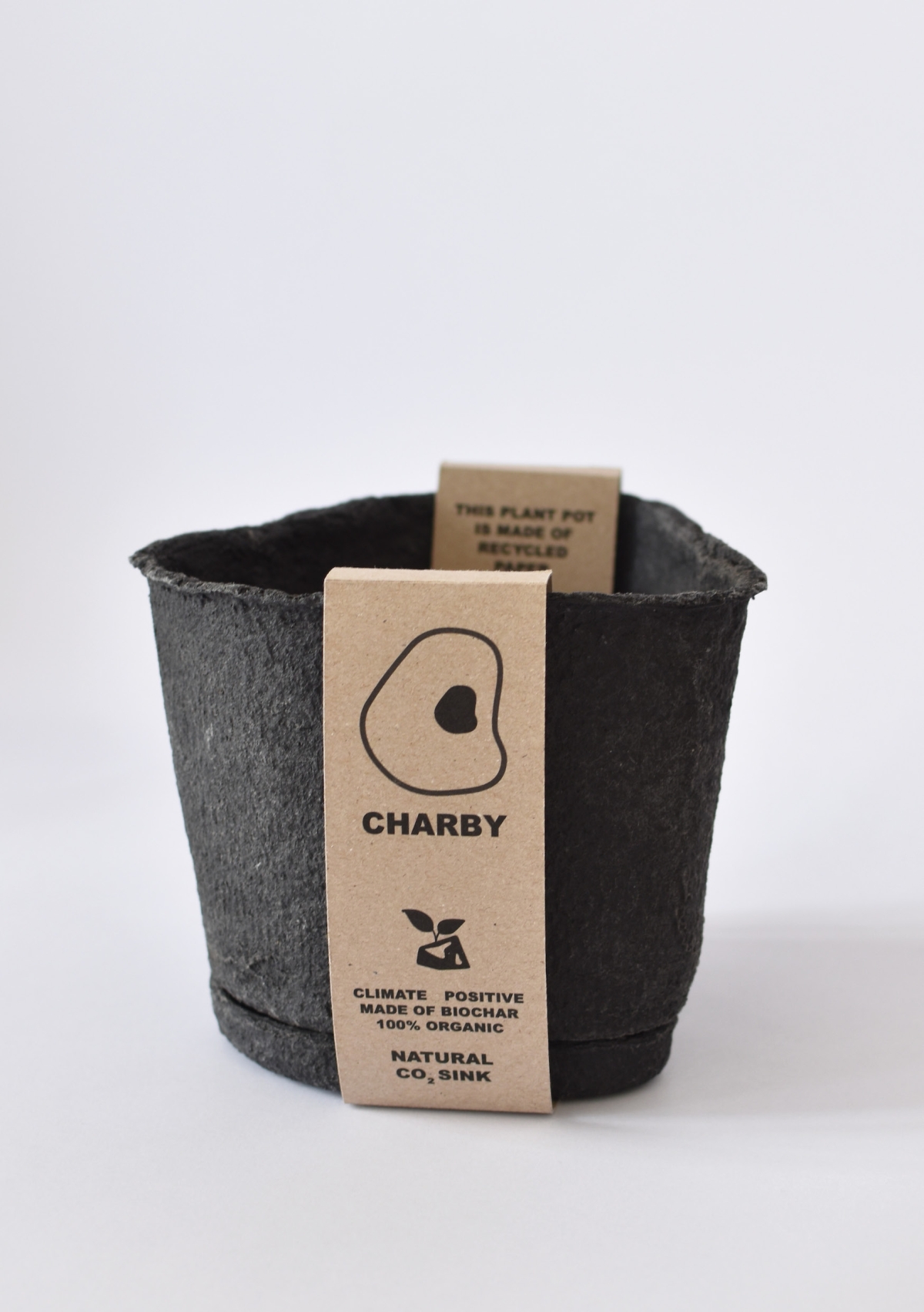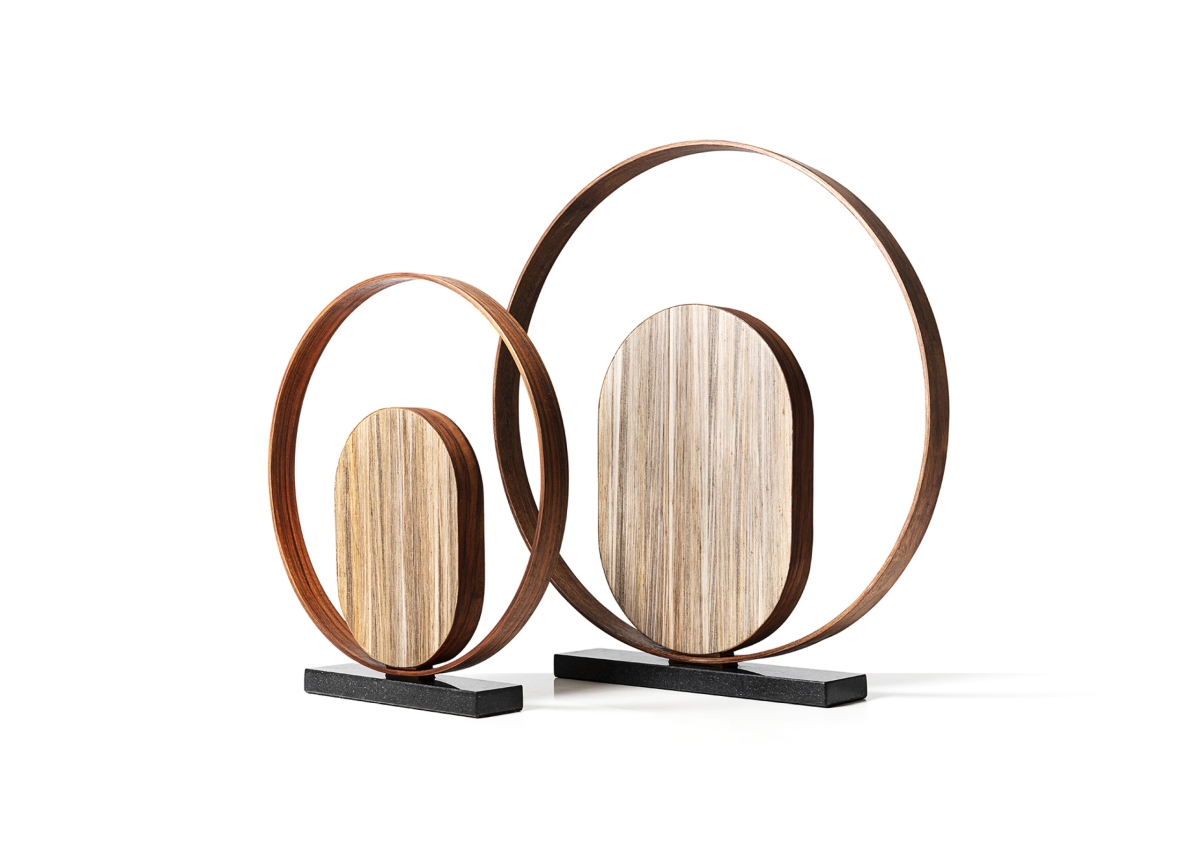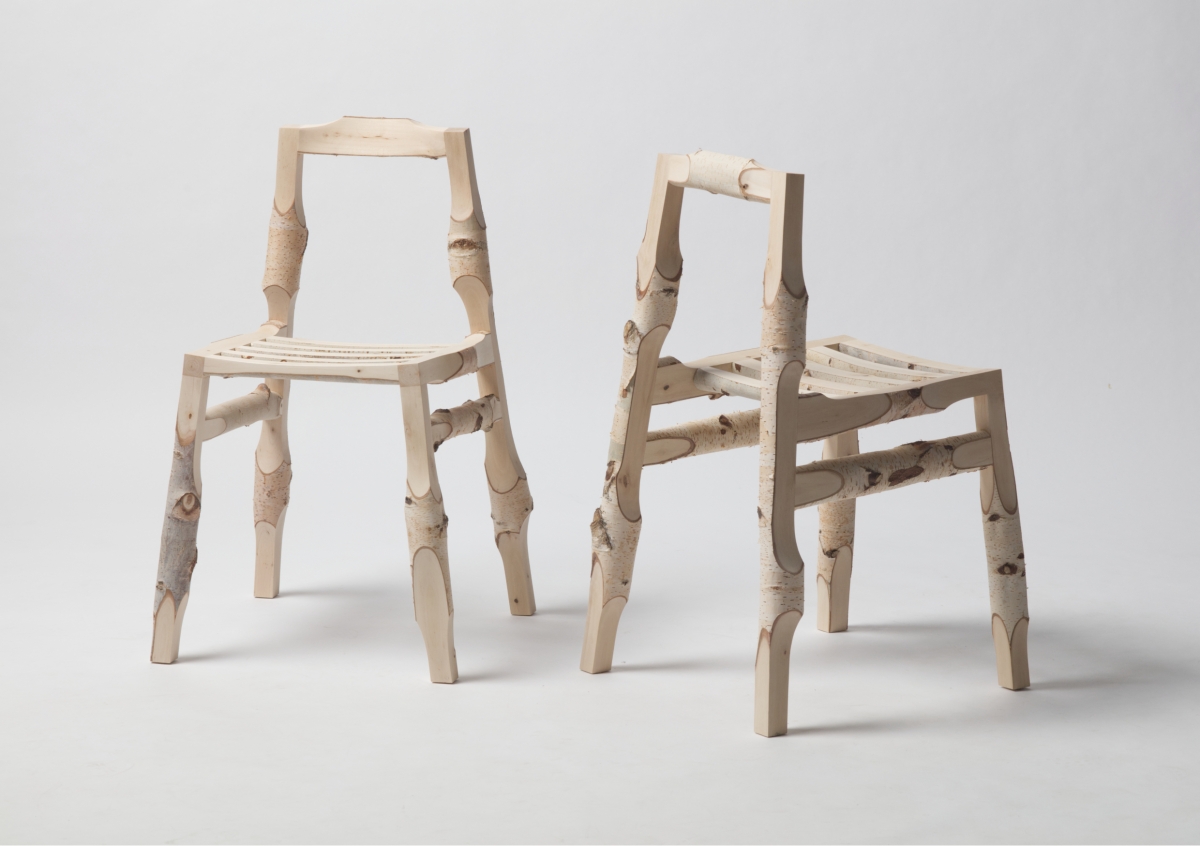How will we use resources responsibly in the future? What contribution can visionary design make to this? More and more start-ups, up-and-coming designers and product developers around the world are dealing with these questions.
by hicklvesting.
Using new types of materials with intelligent, partly pollutant-binding properties, more and more alternatives to conventional manufacturing processes are emerging. With new development approaches and production methods, they are addressing large manufacturers in particular: be it biodegradable, compostable or recyclable products – it is time to question previous approaches and invest in innovative solutions! We have looked into some of the material developments.
#Vegetable carbon

Massimo Scheidegger and Nora Giuliana Iannone presented the “Future Artifact – Charby” planter at the “ein&zwanzig” young talent competition organised by the German Design Council. By integrating vegetable charcoal into the fibre casting process, they create a light, easy-to-produce material that creates ideal nutrient conditions. The vegetable charcoal used is capable of storing hundreds of times the CO2 mass of its capacity – an inspiring example of how easily CO2 can be conserved for many generations. Bio-charcoal or vegetable charcoal is a carbon-rich substance that is produced when biomass is burned without oxygen and prevents carbon from escaping as CO2. Unlike conventional materials, it is not only produced in a cycle-friendly way, it can be integrated into existing manufacturing processes and does not require any new, complex processes when it comes to reuse.
One of the major emitters of greenhouse gases is the fashion industry, which is estimated to be responsible for 10 per cent of global CO2 emissions. According to the European Parliament, that is more than international flights and maritime shipping together produce. The calls to set new ecological and social standards in the production of textiles are thus steadily increasing. Accordingly, the spectrum of development processes is also growing in companies, ranging from the treatment of waste products and the implementation of new technological process steps to the use of modern water recoolers and the commissioning of their own sewage treatment plants.
Recently, the Californian start-up Rubi Laboratories attracted attention by claiming to be able to turn carbon dioxide into environmentally friendly cellulose textiles. Using carbon-negative cellulose textiles, it is said to be possible to produce an environmentally friendly viscose substitute that binds CO2 from the atmosphere. The resulting fabrics are supposed to be carbon-negative, water-neutral and biodegradable. Whether the synthesis process can actually revolutionise the fashion industry and, as the company promises, be a solution to the planet’s immense CO2 pollution remains to be seen.
#Mycelium
The biomaterial mycelium is another basic material of the future, formed by the root system of fungi. It feeds on agricultural waste and binds the carbon contained in the biomass. A London start-up is working with mycelium to insulate buildings – with a welcome side effect: it is naturally flame retardant. The biomaterial is fast-growing and can be produced cheaply. Packaging, lamps, leather-like products and accessories can be developed from this ‘smart’ basic material. This year’s “ein&zwanzig” award winner Emilie Burfeind presents “Sneature“, a play on words from “sneaker” and “nature”, a biodegradable trainer with a sole made of mushroom mycelium. Her design takes into account the fact that a considerable proportion of global emissions are caused by the clothing industry. The short lifespan of these products reinforces their negative balance. “Sneature” is the result of a sophisticated upcycling process of waste materials. The trainer consists of a Chiengora membrane – the combed-out undercoat of long-haired dogs – a transitional area made of natural rubber and a sole made of mushroom mycelium.

#Banana fibre

The Swiss manufacturer Qwstion has already proven that banana plants are suitable as an alternative to synthetic fibres. The company produces bags, backpacks and accessories from the robust, water-repellent material, which is obtained from sustainable agriculture and forestry. With the “Nuclée” lamp, Dorian Étienne and Cordélia Faure from this year’s “ein&zwanzig” shortlist refer not only to the functional properties but also to a special aesthetic of the banana plant. At the same time, they make clear that the natural material only seems to be a new kind of material in the western world. On the east coast of Taiwan, the two designers learned interesting facts about the versatile plant from the Kavalan tribe, who use parts of the banana plant for the traditional production of clothing. The French designers discovered the special aesthetics of the fruit pulp, which often remained unused as a production surplus. In the light, the natural material with its fabric structures reveals a fascinating graphic. Thus, in an intercultural exchange, a special finishing technique was developed that stabilises the plant tissue and makes it versatile.
#Wood
Wood is one of the most important carbon-negative materials, as long as it comes from controlled sources and reforestation provides for regrowth. A fully grown tree can absorb 22 kilograms of CO2 from the atmosphere in the course of a year. The environmental impact usually lies in transport and processing. The amount of waste in particular, which is problematic in the timber industry, is a big challenge for the sector. How can offcuts and sawdust be intelligently reintroduced into the cycle? Forward-looking companies are already processing wood waste into valuable biochar. In Matthias Josef Gschwendtner’s “NEW SOURCES” chair, waste materials from the wood industry make their grand appearance. For the production, the winner of the “ein&zwanzig” award relies on a specially developed process that combines 3D scanning, computational design and robot-based manufacturing, thus enabling the sustainable production of wooden objects. Thanks to a special algorithm, branches can be scanned and even irregularly shaped materials can be inserted in a suitable place. Individually shaped elements make each object unique. The special aesthetics of the chair emerge through the combination of the different surface structures: precisely milled surfaces meet branches with coarse birch bark, creating an interface between nature and technology.

The projects mentioned illustrate the relevance of the three “R “s in the waste prevention hierarchy: Reduce, Reuse, Recycle. With their innovative approaches, the young designers, product developers and start-ups create thought-provoking impulses, suggestions for solutions and calls for action for all players in the market. The necessary dynamics with real effects for an improvement of our environmental balance can be created only together.
Newcomer Award ein&zwanzig 2022
The 21 winners of the international ein&zwanzig competition for young designers have been chosen. With curiosity, a spirit of research and a profound understanding of intelligent problem solving, the young talents combine aesthetics and utility in an impressive way.
The 21 winners will be presented from 6 to 12 June 2022 at the 60th edition of the Salone del Mobile at Officina 3, Via Tortona 31 in Milan. The coveted “Best of Best” award will be presented on 6 June 2022. The winners of last year’s competition for young designers will also be present.
More on ndion
Share this page on Social Media:

